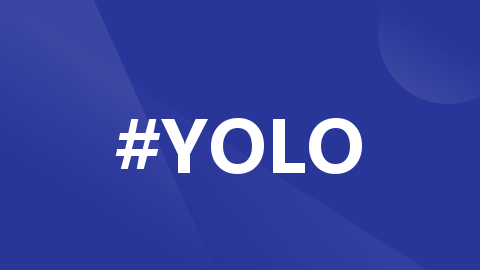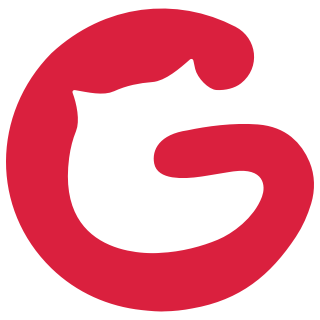
YOLOv7怎么改变检测框(box)的标签字体样式与大小,检测框颜色,修改字体宽度;固定检测标签颜色
YOLOv7中detect.py所用的检测框字体为plots.py中的 plot_one_box函数
from utils.plots import plot_one_box
因此进入到utils文件夹下的plots.py文件中,找到plot_one_box
def plot_one_box(x, img, color=None, label=None, line_thickness=3):
# Plots one bounding box on image img
tl = line_thickness or round(0.002 * (img.shape[0] + img.shape[1]) / 2) + 1 # line/font thickness
color = color or [random.randint(0, 255) for _ in range(3)]
c1, c2 = (int(x[0]), int(x[1])), (int(x[2]), int(x[3]))
cv2.rectangle(img, c1, c2, color, thickness=tl, lineType=cv2.LINE_AA)
if label:
tf = max(tl - 1, 1) # font thickness
t_size = cv2.getTextSize(label, 0, fontScale=tf/3 , thickness=tf)[0]
c2 = c1[0] + t_size[0], c1[1] - t_size[1] - 3
cv2.rectangle(img, c1, c2, color, -1, cv2.LINE_AA) # filled
cv2.putText(img, label, (c1[0], c1[1] - 2), 0, 2, [225, 255, 255], thickness=tf, lineType=cv2.LINE_AA)
1. 修改标签背景框:
找到t_size = cv2.getTextSize(label, 0, fontScale=tl/3 , thickness=tl)[0],对这一行进行修改:
fontscale=1.5 fontscale=3


这里的fontscale(字体大小)指的是框里面应该放的字体大小,并不是真正改字体大小,下面的putText中才是。
2. 修改标签字体:
找到 cv2.putText(img, label, (c1[0], c1[1] - 2), 0, 2, [225, 255, 255], thickness=tf, lineType=cv2.LINE_AA),对这一行进行修改:
括号里的参数依次为:图片,添加的文字,左上角坐标,字体样式,字体大小,颜色,字体粗细
因此,想要修改字体大小,需要对第3个参数进行修改,
cv2.putText(img, label, (c1[0], c1[1] - 2), 0, 3, [225, 255, 255], thickness=tf, lineType=cv2.LINE_AA)
3. 修改字体宽度:
一般你的标签看不清,都需要改这一项,找到
cv2.putText(img, label, (c1[0], c1[1] - 2), 0, 2, [225, 255, 255], thickness=tf, lineType=cv2.LINE_AA)
可以直接tf改成你想要的数字,或者改tf参数
cv2.putText(img, label, (c1[0], c1[1] - 2), 0, 2, [225, 255, 255], thickness=2, lineType=cv2.LINE_AA)
4. 修改字体样式:
cv2.putText(img, label, (c1[0], c1[1] - 2), 0, 2, [225, 255, 255], thickness=tf, lineType=cv2.LINE_AA)

5. 修改框的颜色:
修改颜色直接进detect.py文件中找到:
names = model.module.names if hasattr(model, 'module') else model.names
colors = [[random.randint(0, 255) for _ in range(3)] for _ in names]
可见每次detect后颜色都是随机生成的,因此我们需要把每类标签的颜色固定。
把colors改为你想要的颜色,有多少个类别就选择多少颜色,也可以多列举几个颜色 :
colors = [[0, 255, 0], [0, 0, 255], [255, 0, 0],[255, 150, 0],
[255, 0, 150], [0, 150, 255], [150, 0, 255]]
6. 取消显示标签,只保留框:
注释掉以下几行即可

效果如下:


本人也是近期接触YOLOv7,如果有什么更好的修改方法欢迎评论区互相讨论学习!
7. 2024.6.10 有朋友私信想要新罗马体的预测标签
参考博客【YOLOv7】Yolov7不支持中文标签,中文乱码,中文显示问号解决方案_yolov8验证集图片显示中opencv不支持中文显示,使用plot打标签-CSDN博客
按照以下方式即可更换任意字体
步骤一: 下载你想要的字体,例如新罗马体Times-Roman免费字体下载 - 英文字体免费下载尽在字体家 (zitijia.com)
下载好后放在yolov7工作目录内(与detect.py同级目录)
步骤二:找到plots.py,将相应函数替换为:
def plot_one_box(x, img, color=None, label=None, line_thickness=3):
# Plots one bounding box on image img
color = color or [random.randint(0, 255) for _ in range(3)]
c1, c2 = (int(x[0]), int(x[1])), (int(x[2]), int(x[3]))
tl = line_thickness or round(0.002 * (img.shape[0] + img.shape[1]) / 2) + 1 # line/font thickness
cv2.rectangle(img, c1, c2, color, thickness=tl, lineType=cv2.LINE_AA)
plot_one_box_PIL(tuple((float(x[0]), float(x[1] - 1), float(x[2]), float(x[3]))), img, color, label, line_thickness)
# if label:
# tf = max(tl - 1, 1) # font thickness
# t_size = cv2.getTextSize(label, 0, fontScale=tl / 3, thickness=tf)[0]
# c2 = c1[0] + t_size[0], c1[1] - t_size[1] - 3
# cv2.rectangle(img, c1, c2, color, -1, cv2.LINE_AA) # filled
# cv2.putText(img, label, (c1[0], c1[1] - 2), 0, tl / 3, [225, 255, 255], thickness=tf, lineType=cv2.LINE_AA)
def plot_one_box_PIL(box, imgbase, color=None, label=None, line_thickness=None):
rows, cols, channels = imgbase.shape
img = Image.fromarray(imgbase)
draw = ImageDraw.Draw(img)
line_thickness = line_thickness or max(int(min(img.size) / 200), 2)
draw.rectangle(box, width=line_thickness, outline=tuple(color)) # plot
if label:
fontsize = max(round(max(img.size) / 80), 6)
font = ImageFont.truetype("Times.ttf", fontsize, encoding="utf-8")
txt_width, txt_height = font.getsize(label)
draw.rectangle([box[0], box[1] - txt_height + 0, box[0] + txt_width, box[1]], fill=tuple(color))
draw.text((box[0], box[1] - txt_height + 1), label, fill=(255, 255, 255), font=font)
newimg = np.asarray(img)
imgbase[0:rows, 0:cols] = newimg
return newimg更多推荐
 已为社区贡献3条内容
已为社区贡献3条内容










所有评论(0)